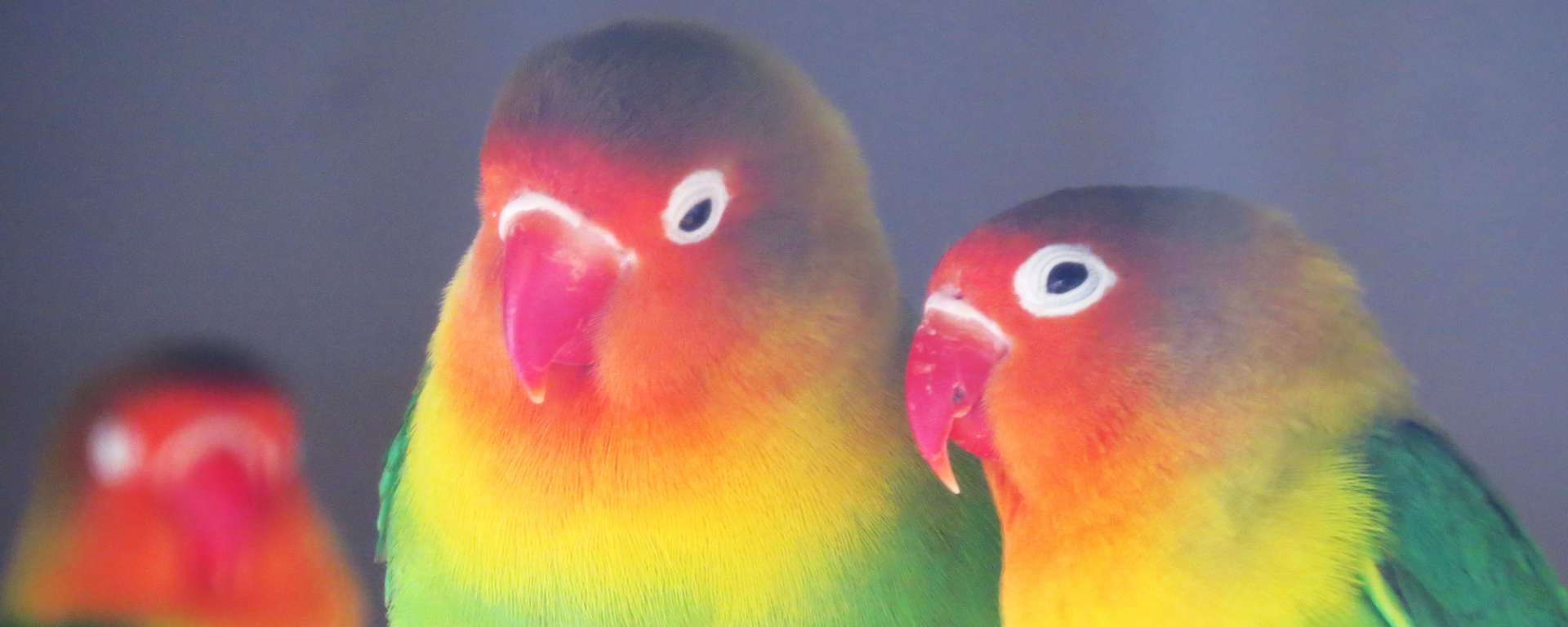Safari Spotlight: The Fischer’s Lovebird
Posted in: Safari Spotlight
Tags: Fischer's lovebirds
Author’s Note: This edition of Safari Spotlight is a special one for me. My fiancee, Kelsey Fisher and I have spent a great deal of time watching the Fischer’s lovebirds at Safari West and they are among her favorite creatures here. In light of our wedding this September, I thought it high time I spotlighted these beautiful birds.
A Rainbow on the Plain
The Serengeti. This savanna, famous for its massive mammals—the lions and leopards, the elephants, the vast herds of wildebeest—also hosts a variety of birds. Among them, the Fischer’s lovebird (Agapornis fischeri). These tiny parrots, plumed in brilliant rainbow colors, look as though they’d be more at home in a rainforest than an open plain. Yet here they gather, all the same, glittering in flocks of green, gold, and scarlet.
They roost in the plains, gathering in small flocks on the scattered trees and shrubs. As birds who feed mostly on grass seeds and small fruits, these lonely trees offer a perfect home base from which to forage. While feeding, these small flocks can sometimes merge into groups of a hundred or more. This behavior, coupled with their fondness for crop-grains like millet and maize has led some farmers to consider the birds pests.
While persecution from farmers does impact the birds, it’s their beauty, rather than their appetite that gets them in the most trouble. Since the 1970’s, this beautiful and personable bird has been a popular pet. Wild specimens have been captured and brought into the global pet trade in astonishing numbers. The IUCN classifies the Fischer’s lovebird as Near Threatened largely because of the predations of the pet trade.
Near Threatened marks the earliest stage of species endangerment and is cause for concern. Thankfully the home country of Fischer’s lovebirds, Tanzania, has put a stop to trapping and export. While it could restart at any time, for the moment the threat appears mitigated. We will have to keep a close eye on wild populations to see if this protection allows them to rebound to their former glory.
What a Lovely Pair of Parrots
Fischer’s lovebirds are monogamous and appear to mate for life. While not all that uncommon among birds, lovebirds famously take it to an egregious level. Mated lovebirds not only spent nearly all their time together, they spend nearly all their time touching. They also preen one another constantly and nibble on each other’s beaks; an act that looks an awful lot like kissing. Once mated, these birds are basically inseparable (fun fact: in French, the birds are known as Insepérable de Fischer).
Before a Fischer’s lovebird can enjoy a lifetime of mated bliss, it must find a partner and win their affections. To do this, male lovebirds do a neat little side-shuffle, bobbing their heads and singing to a nearby female. If the lady is impressed, she settles in to watch the show. The male continues his head-bobbing as he sidles up to her and then, in the ultimate romantic gesture, he regurgitates into her mouth.
Once mated, the pair finds a nice cavity in a tree or rock pile and builds a nest inside it. In this cozy little cavern, the female lays three to eight eggs and defends them aggressively. While we don’t know much about how often these amorous birds breed, it can happen up to twice per year. Since baby lovebirds become fully independent in less than six weeks, that leaves plenty of time for the parents to establish a new brood.
Lovebird Lagoon
The next time you visit Safari West, be sure to visit our flock of Fischer’s lovebirds. You’ll find them in one of the aviaries beside the Lemur Pond. If you happen to overlook their busy chirping, you’ll certainly notice their rainbow plumage. Add a little amour to your life and reserve a visit to our Fischer’s lovebirds today!


